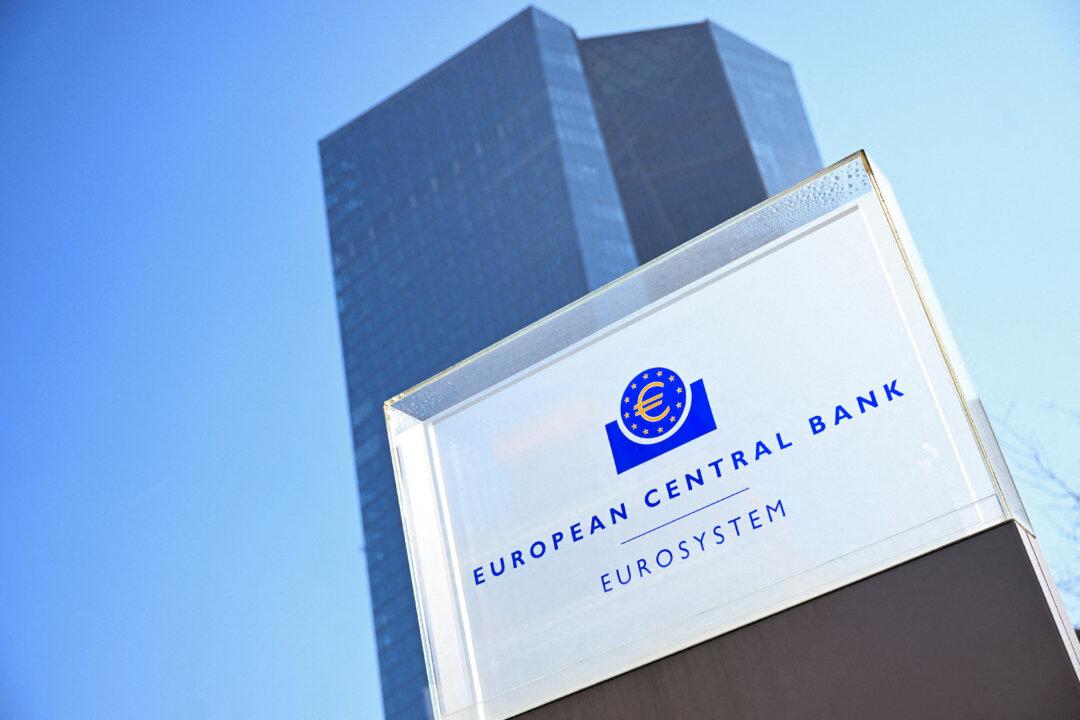The United States’ 25 biggest banks saw a $90 billion outflow of deposits in the second week since the Silicon Valley Bank (SVB) collapse, a sharp reversal from the week before, when larger financial institutions absorbed some of the deposits being withdrawn at a record pace from smaller banks.
But although the first week following the failure of SVB saw a record drop of $196.4 billion in deposits in smaller banks—defined as ones smaller than the top 25 in terms of assets—a reversal followed, with small domestically chartered banks seeing an increase of roughly $6 billion.
Still, the latest figures show that smaller banks remain down by a little more than $190 billion since the collapse of SVB sent shockwaves across markets.
Big banks, meanwhile, which saw an increase in deposits in the week following the SVB failure, saw a sharp decline in the next. Deposits at large domestically chartered banks dropped by $89.7 billion in the week that ended March 22. A week earlier, big banks gained $67 billion in deposits. The latest data show that large U.S. banks are down $22.7 billion since the SVB collapse.
Credit Crunch Coming?
Following the failure of SVB, a number of emergency measures were rolled out to calm markets, including expanded deposit guarantees and a special swap line at the Fed where banks could borrow under easier terms than normal to meet depositor demand.While the immediate threat of broader financial contagion seems to have abated, experts warn that the real economy is poised to take a hit as lending standards tighten and credit dries up.
Lending standards started tightening in early 2022 with the Federal Reserve’s inflation-fighting rate hikes and balance-sheet runoff. Now, they’re getting even tighter amid the early fallout from U.S. banking sector turmoil.
“The recent failure of Silicon Valley Bank and Signature Bank, as well as worries about the rest of the banking system (whether justified or not), has contributed to growing credit tightness,” Peter Earle, an economist at the American Institute for Economic Research, told The Epoch Times in an emailed statement.
“The reduction in corporate bond issuance over the past few weeks is a clear sign of that development.”
U.S. companies with the highest credit ratings sold a record $144 billion of debt securities in February to get ahead of further potential interest-rate hikes, according to a recent report from BMO Capital Markets.
But the failure of SVB—and of Signature Bank just days later—led to deals in the corporate bond market grinding to a near standstill. During the week following the twin bank collapses, there were zero investment-grade bond deals priced, according to PitchBook LCD. Although deals started up again the following week, activity remained weak.
The situation was much the same in the high-yield bond market for companies with lower credit ratings, with near-zero issuance over the past several weeks.
Earle said that if worries about the health of the U.S. banking sector continue, this will “eventually result in lending being unavailable or only accessible at exorbitant rates,” resulting in a credit crunch.
‘Big Issue for Local Communities’
After an initial surge of $129.3 billion in deposit outflows from all U.S. domestically chartered banks in the first week following the SVB collapse, the run on deposits slowed last week to a net $84 billion.Although U.S. regulators have said this represents a stabilization in deposit outflows, there’s considerable uncertainty as to where things go from here.
“What’s unclear for us is how much of these banking stresses are leading to a widespread credit crunch. That credit crunch ... would then slow down the economy. This is something we are monitoring very, very closely,” Neel Kashkari, president of the Federal Reserve Bank of Minneapolis, said in a March 26 interview on CBS.
Kashkari noted that it’s too soon to gauge the “imprint” that bank stress will have on the economy.
Allianz chief economic adviser and noted economist Mohamed El-Erian wrote in a recent op-ed for Bloomberg that if deposit outflow from regional banks continues, this spells trouble.
“This could become a big issue for local communities, regions, and sectors that fear that their access to loans will be curtailed because their traditional banking partners will have to shrink their balance sheets after losing deposits,” he wrote.
El-Erian said he believes that the bank turmoil will slowly infect the real economy by squeezing access to credit.
“This economic contagion, which will play out over time, threatens to increase the challenges facing an economy that is dealing with inflation, a mishandled interest-rate hiking cycle, declines in personal savings, bouts of financial instability and a slowing global economy.”
Experts have said that small businesses that often rely on local banks for their lending needs are particularly vulnerable to the looming credit crunch.





